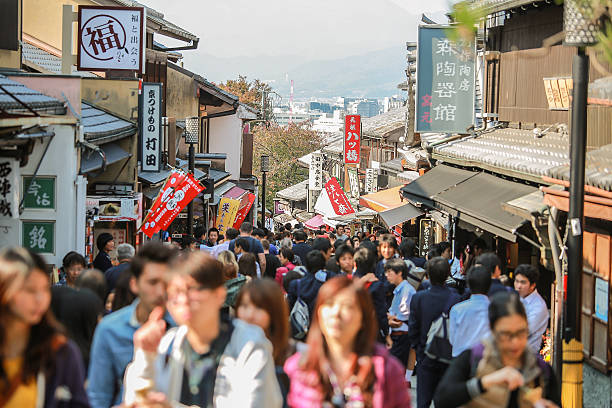Japan is a country where ancient traditions seamlessly blend with cutting-edge modernity. From the neon lights of Tokyo to the serene temples of Kyoto and the culinary delights of Osaka, a journey through Japan offers a rich tapestry of experiences. In this blog post, we’ll outline a two-week itinerary that covers these iconic cities while highlighting cultural etiquette, must-see landmarks, and unique experiences, such as traditional tea ceremonies.
Two-Week Itinerary Overview
Week 1: Tokyo
Day 1: Arrival in Tokyo
- Arrive at Narita or Haneda Airport.
- Check into your hotel and relax.
- Take a stroll in Shinjuku Gyoen National Garden for a peaceful introduction to the city.
Day 2: Explore Shibuya and Harajuku
- Start your day at the famous Shibuya Crossing, one of the busiest pedestrian intersections in the world.
- Visit Meiji Shrine, surrounded by a beautiful forested area.
- Explore Harajuku for unique fashion and trendy shops, and don’t miss Takeshita Street.
Day 3: Asakusa and Akihabara
- Visit Senso-ji, Tokyo’s oldest temple, located in Asakusa. Enjoy traditional snacks from local vendors.
- Head to Akihabara, the hub of otaku culture, to explore electronics shops and anime stores.
Day 4: Cultural Experiences
- Join a traditional tea ceremony in a serene setting, where you’ll learn about the art of matcha preparation.
- In the evening, explore the vibrant streets of Shinjuku, visiting Golden Gai for a taste of Tokyo’s nightlife.
Day 5: Day Trip to Nikko
- Take a day trip to Nikko National Park to see the stunning Toshogu Shrine, a UNESCO World Heritage site. The natural beauty of the area is breathtaking, especially in autumn.
Week 2: Kyoto and Osaka
Day 6: Travel to Kyoto
- Take the Shinkansen (bullet train) to Kyoto (approx. 2.5 hours).
- Visit Kinkaku-ji (the Golden Pavilion), a stunning Zen temple covered in gold leaf.
Day 7: Temples and Tea
- Explore Arashiyama: walk through the famous bamboo grove and visit Tenryu-ji Temple.
- In the afternoon, participate in a matcha tea ceremony at a local tea house, experiencing the tranquil process firsthand.
Day 8: Fushimi Inari and Gion
- Spend the morning hiking the trails of Fushimi Inari Taisha, famous for its thousands of vermillion torii gates.
- In the evening, stroll through Gion, the historic geisha district, and enjoy a traditional kaiseki dinner.
Day 9: Nijo Castle and Cultural Insights
- Visit Nijo Castle, a UNESCO World Heritage site known for its beautiful gardens and ornate architecture.
- In the afternoon, participate in a calligraphy class to learn the basics of this ancient art.
Day 10: Travel to Osaka
- Take a short train ride to Osaka (about 15 minutes).
- Explore Osaka Castle, one of Japan’s most famous landmarks, surrounded by beautiful gardens.
Day 11: Culinary Adventures
- Dive into Osaka’s renowned food scene by exploring Dotonbori, famous for its street food. Don’t miss trying takoyaki and okonomiyaki.
- In the evening, visit Umeda Sky Building for panoramic views of the city.
Day 12: Day Trip to Nara
- Take a day trip to Nara, Japan’s first capital. Visit Todai-ji Temple, home to a giant Buddha statue, and stroll through Nara Park, where friendly deer roam freely.
Day 13: Explore Modern Osaka
- Visit the Osaka Aquarium (Kaiyukan), one of the largest in the world.
- Spend your afternoon shopping at Shinsaibashi and experience the vibrant local culture.
Day 14: Departure
- Depending on your flight schedule, enjoy a leisurely breakfast and do any last-minute shopping or sightseeing before heading to the airport.
Cultural Etiquette in Japan
- Respectful Greetings: Bowing is a traditional form of greeting. A slight bow is usually sufficient, but you can also shake hands.
- Dining Etiquette: Always say “itadakimasu” before meals and “gochisousama deshita” after finishing. It’s polite to use chopsticks correctly and not to stick them upright in rice.
- Shoes Off Indoors: Remove your shoes when entering someone’s home or traditional accommodations like ryokans.
- Quiet Public Behavior: Keep your voice low on public transportation and avoid talking on your phone.
- Queueing: Always form a line and wait your turn, whether at train stations or in stores.
Conclusion
Japan is a captivating destination where culture, history, and modernity coexist harmoniously. This two-week itinerary offers a blend of iconic landmarks, unique experiences, and cultural insights that will leave you with unforgettable memories. Embrace the warmth of Japanese hospitality, savor delicious cuisine, and immerse yourself in the rich traditions that make Japan truly special. Get ready for a journey that will inspire and enchant you!

